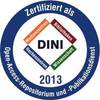Preview |
PDF, English
- main document
Download (27MB) | Terms of use |
Abstract
Head and neck squamous cell carcinoma (HNSCC) are aggressive solid tumors with high mortality rates. Advancing personalized therapeutic strategies necessitates in-depth understanding of tumor biology and the tumor microenvironment (TME). This thesis establishes a novel, long-term 3D bioprinted HNSCC model using tunicate-derived nanocellulose (NC) hydrogels, specifically TEMPO and Carboxy-NC, compared against the semi-synthetic and widely used gelatin methacryloyl (GelMA) hydrogel. Both NC hydrogels exhibited superior bioprintability to GelMA-alginate (GelMAA), with Carboxy-NC supporting sustained HNSCC proliferation, survival, and epithelial phenotype maintenance over 21 days. Hydrogel microstructural analyses revealed distinct pore morphologies, contributing to hydrogel specific functionality. The bioprinted model was validated for radiochemotherapy (RCT) testing using both cell lines and patient-derived cultures. Compared to 3D spheroid models, the bioprinted constructs demonstrated reduced cytotoxic responses, better reflecting in vivo tumor behavior. These findings emphasize Carboxy-NC’s potential as a viable alternative to gelatin-based bioinks for drug efficacy testing and personalized medicine applications. Further, this work explored xeno-free media alternatives to enhance the clinical relevance of patient-derived HNSCC models. Using human-derived platelet lysate (hPL) and commercially available StemMACS™ MSC Expansion Medium XF (StemMACS™ XF) media as substitutes for fetal bovine serum (FBS), ex vivo cultures maintained histomorphological and immunohistochemical similarity to untreated primary tissues over 10 days. Comparable expression patterns of PD-L1, Ki-67, and vimentin were observed, validating these media as effective alternatives to FBS. The research in this thesis highlights the potential of tunicate-derived NC innovative bioinks and xeno-free culture systems to significantly advance preclinical modeling. By incorporating additional TME components, this platform can evolve into a humanized, heterotypic model, offering a robust tool for precision oncology and personalized drug testing.
| Document type: | Dissertation |
|---|---|
| Supervisor: | Rotter, Prof. Dr. Nicole |
| Place of Publication: | Heidelberg |
| Date of thesis defense: | 6 October 2025 |
| Date Deposited: | 11 Nov 2025 07:11 |
| Date: | 2025 |
| Faculties / Institutes: | Medizinische Fakultät Mannheim > Klinik für Hals-Nasen-Ohrenheilkunde, Kopf- und Halschirurgie |









